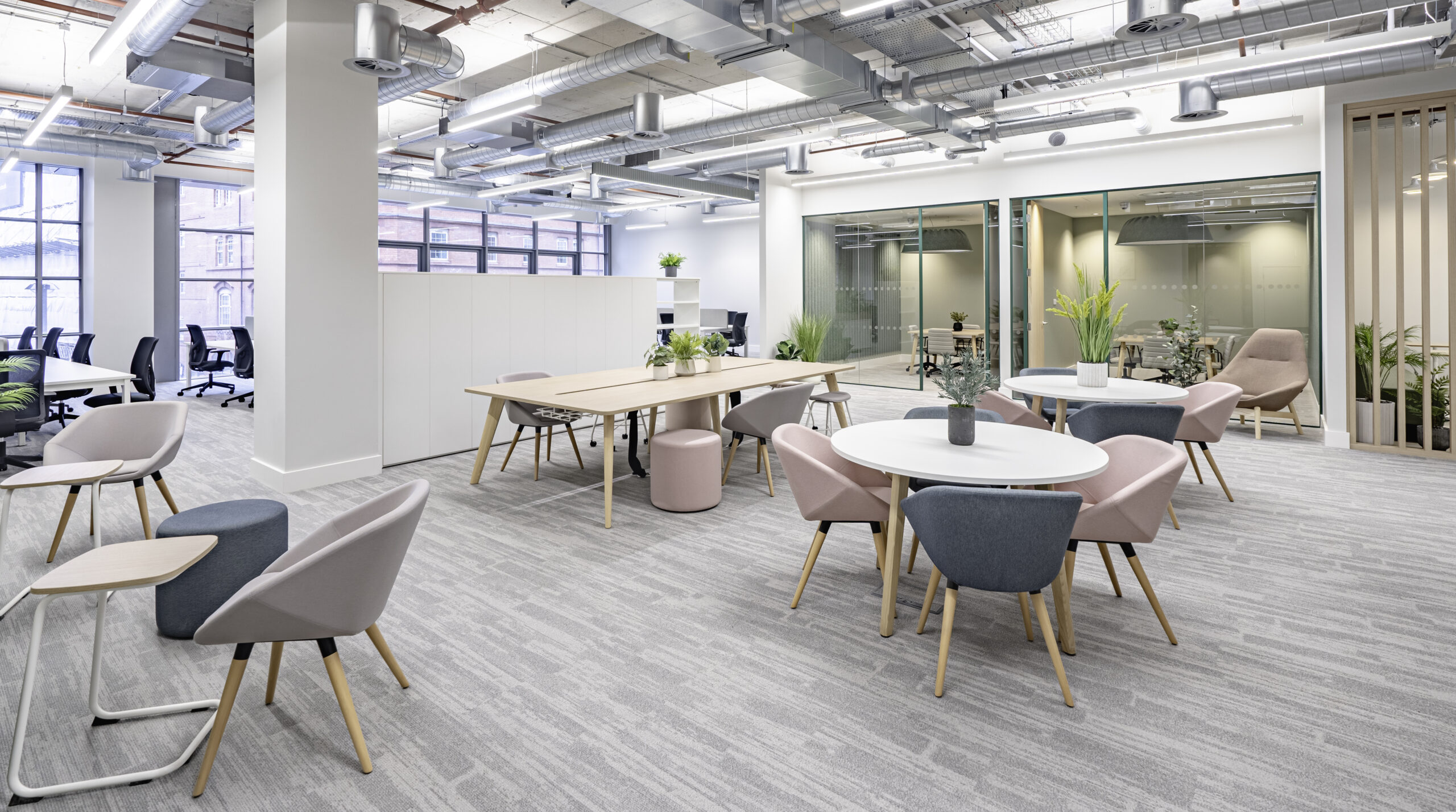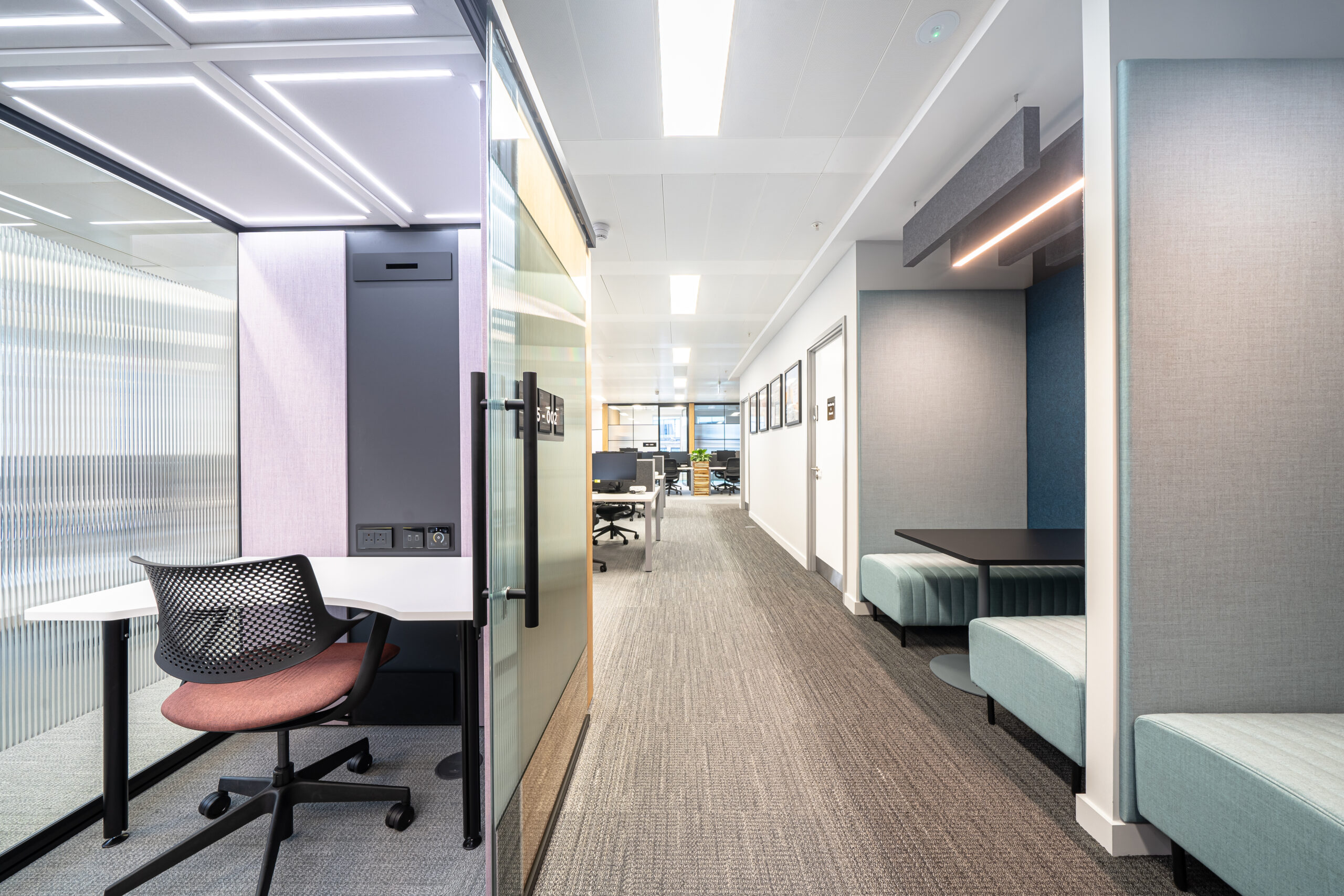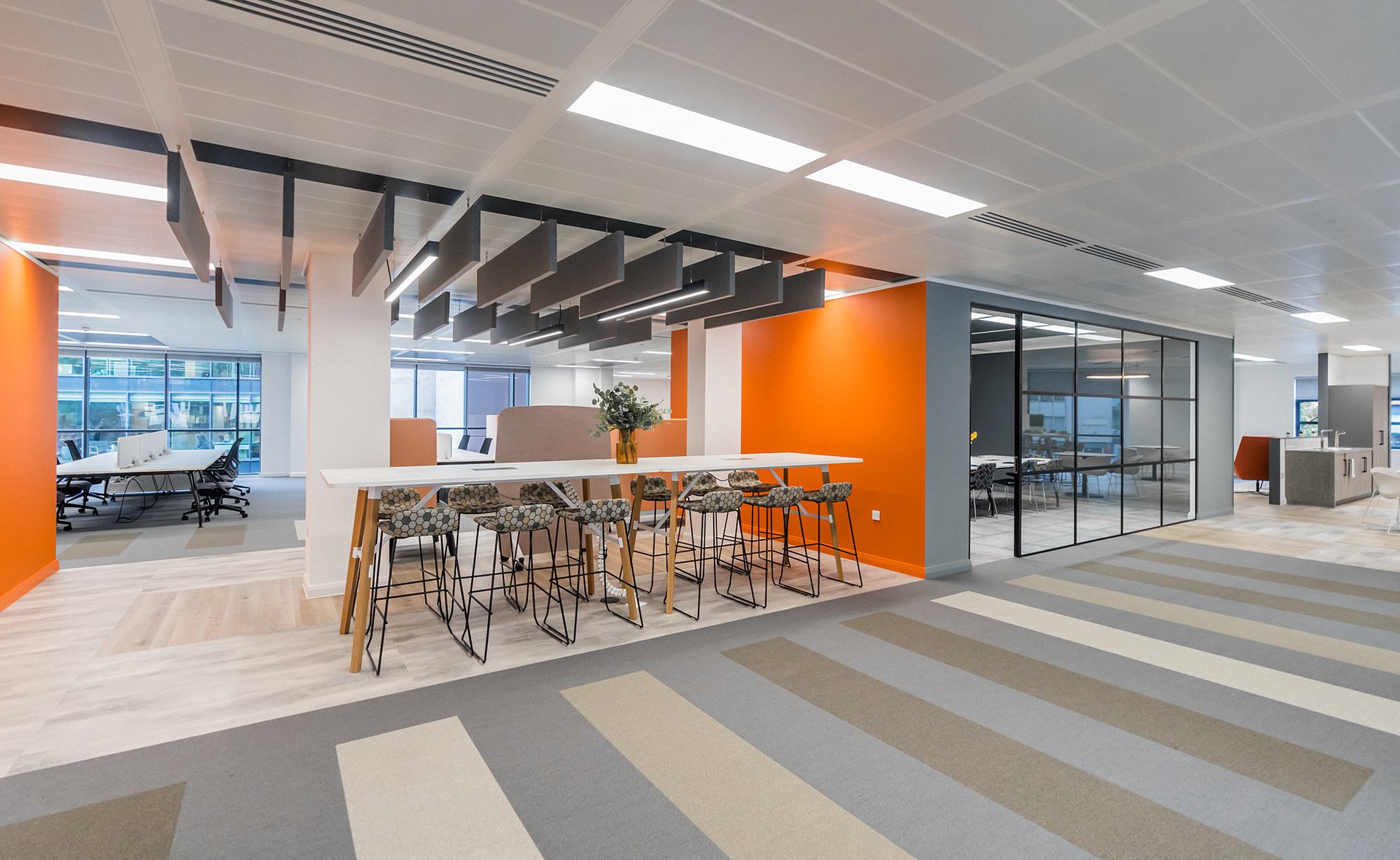At Estilo Interiors, we understand that while open-plan offices are excellent for fostering collaboration, creativity, and transparency, they can also introduce challenges like noise, distractions, and reduced privacy. If these issues are left unaddressed, they can negatively impact employee wellbeing, productivity, and overall job satisfaction.
So, how can you create a workspace that achieves the perfect balance between collaboration and privacy?
What Does the ‘Right Balance’ Mean for Your Organisation?
Every employee has their own unique working style. Some thrive in group settings, others work best alone, and many fluctuate between the two depending on the day. In the UK, around one in seven people are neurodivergent, meaning that 15% of your workforce may experience the work environment differently.
Designing a workplace that is both inclusive and productive requires leaders to understand the diverse needs and abilities within their organisation. Tailoring the workspace to the moments that matter most to your employees can significantly improve their experience. For instance, legal and financial companies might focus on privacy and confidentiality, while creative industries may emphasize open collaboration.
Looking at broader trends, Gensler’s UK Workplace Survey (2023) found that the top two reasons employees go to the office are to focus on work and collaborate with colleagues. This suggests that most organisations need to support both teamwork and private, focused work. But how do you ensure privacy in an open-plan office?

Here are four key design strategies to help achieve this balance:
1. Activity-Based Settings
A variety of workplace settings allows employees to choose where and how they work best. Collaborative spaces might include creative studios, social hubs, and breakout areas, while private spaces could feature phone booths, enclosed meeting rooms, and quiet zones like libraries.
To determine the right settings for your team, start by assessing the different activities they perform. A representative from each department can help guide these decisions, ensuring the design takes all perspectives into account.
2. Layout and Positioning
Effective zoning within the office helps designate specific areas for different activities. Zones could include spaces for meetings, collaboration, relaxation, focus, and storage, as well as areas for hosting visitors.
Once the zones are identified, it’s important to consider their location. Quiet areas for focused work or relaxation should be positioned away from high-traffic zones, while collaborative spaces can be placed in more active parts of the office. Offering staff personal lockers can also help in offices without dedicated desks.
3. Acoustics
Noise impacts people differently; some employees may work well with background music, while others need complete silence. It’s crucial to design a space that addresses this variety of preferences.
Acoustic solutions like high-backed sofas, sound-absorbing panels, soft furnishings, and indoor plants can help reduce noise in open-plan spaces. Offering accessories such as noise-cancelling headphones can further assist in managing sound levels.
For those who need quiet to focus, providing acoustically treated private pods or designated silent areas ensures that all staff can work comfortably and handle confidential tasks.

4. Adaptability
While open-plan offices are great for spontaneous interactions and shared learning, they should also accommodate privacy when needed. Flexible design elements like folding walls, acoustic curtains, and modular furniture allow offices to adapt between private and social settings with ease. Adjustable lighting also enables employees to customise their surroundings based on the task at hand.
In Summary
To maximise employee performance, workplaces need to support a wide range of activities, from private individual focus to open, collaborative spaces. Providing clear guidance on how to use these spaces is just as important as the design itself. Engaging staff throughout the process and offering user guides can ensure everyone makes the most of their work environment.
Looking to find the perfect balance between privacy and collaboration? Reach out to the team at Estilo Interiors here, to explore how we can help tailor your office to meet the needs of your workforce.



